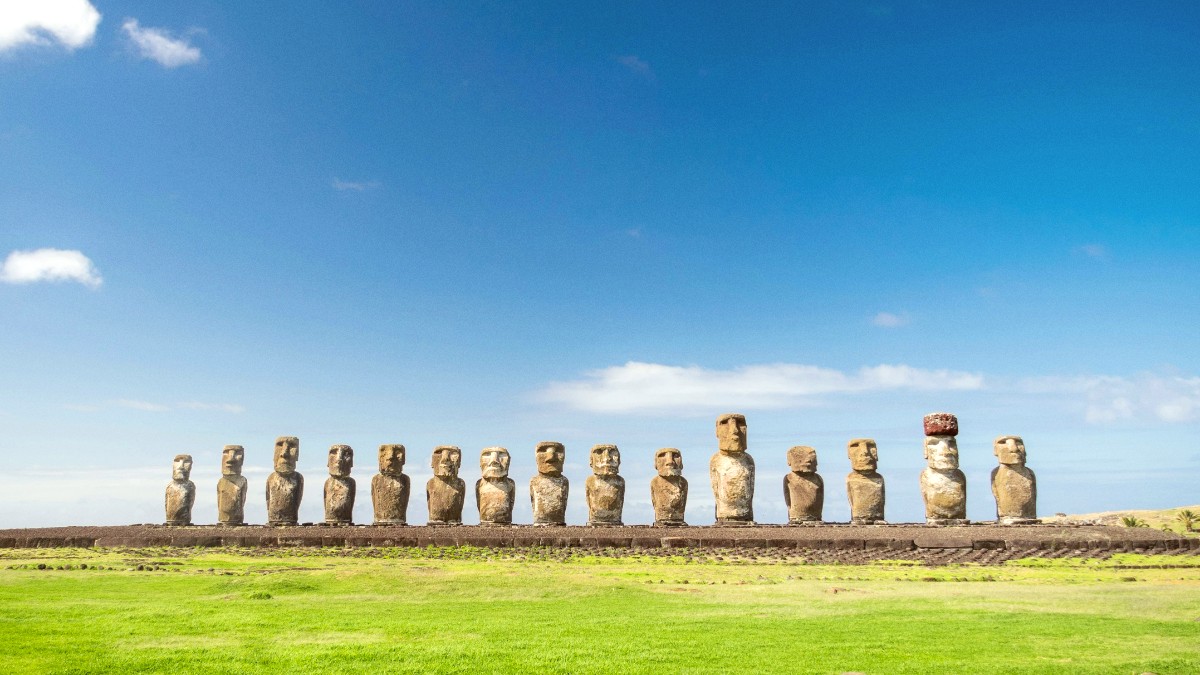
Chile
Summer (December - March) brings the warmest months, with temperatures from 70°F (21°C) to 80°F (27°C) and higher humidity. Short, heavy rain showers typically clear quickly, leaving sunshine. Autumn (April - May) maintains pleasant temperatures (65-75°F) with lower humidity, though rain may occur. Winter (June - August) presents the mildest temperatures (58-70°F) and the highest rainfall, alongside stronger winds.
Spring (September - November) weather is similar to autumn, with less rain than winter. Winds may still be present.
Strong winds may occur year-round, especially on exposed coastal areas. Rainfall, while present throughout the year, generally does not interrupt sightseeing. Easter Island does not experience specific monsoon or hurricane seasons.
Pack layers regardless of the season, as Easter Island weather changes quickly. Adaptability in clothing choices is valuable.
Jan-Feb (Tapati Fest)
Warmest weather, full service capacity.
Highest prices, peak crowds.
Mar-Apr, Sep-Nov
Pleasant temperatures, fewer crowds, lower prices.
Potential for unsettled weather.
May-Aug
Lowest prices, fewest crowds, lush scenery.
Cooler temperatures, higher rain chance, rougher seas.
Shoulder seasons (March-April, September-November) offer comfortable temperatures and fewer crowds for extensive exploration.
Summer (December-March) is optimal for swimming, snorkeling, and diving due to warmer water and calmer seas.
Early morning/late afternoon light; clearer skies in summer.
Tapati Rapa Nui Festival (early February) for cultural immersion. Book far in advance.
Shoulder seasons for comfortable conditions.
Summer for optimal water conditions.
Low season for quiet experiences.
Specific regulations exist to support the island's preservation.
Most nationalities, including citizens of the United States, Canada, Australia, New Zealand, and the European Union, do not need a visa for tourist stays up to 90 days in mainland Chile. A valid passport suffices.
All non-residents, including Chilean nationals, must comply with special entry requirements (Law 21.070). These rules support tourism management and the island's fragile environment and culture. Maximum stay is 30 days for non-residents.
Costs vary significantly by travel style and booking choices. These are estimates.
The island is generally very safe; preparation matters for well-being.
No specific vaccinations are mandatory for entry to Chile or Easter Island from the United States. Routine vaccinations should be current. Hepatitis A and Typhoid are generally considerations for most travelers to regions where food and water contamination may occur.
Discuss these with your healthcare provider well before travel.
A hospital in Hanga Roa handles basic medical emergencies and general care. For serious conditions, evacuation to mainland Chile or beyond may be necessary.
Hospital Hanga Roa is available.
Serious cases may need mainland evacuation.
Tap water in Hanga Roa is generally drinkable. Bottled water is widely available. Consider a Water purification filter bottle for added comfort.
Tap water is generally safe.
Caution with unhygienic street food.
Easter Island has a very low crime rate. Petty theft, though rare, may occur from unattended vehicles or beach belongings. Hanga Roa is the only town, and general safety is high.
Very low crime rate.
Do not leave valuables visible in rental cars.
| Hazard | Description | Response |
|---|---|---|
| Tsunamis | Island in active seismic zone; risk exists, though rare. | Evacuation routes are marked in coastal areas. Heed local advisories. |
| Volcanic Activity | Volcanoes are dormant, no immediate risk. | No action needed related to volcanoes. |
| Strong Winds | Possible year-round, may affect boat tours. | Check local forecasts; plan activities accordingly. |